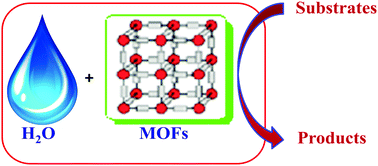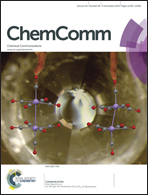Catalysis by metal–organic frameworks in water
Abstract
Metal–organic frameworks (MOFs) having a large surface area and porosity as well as a high density of transition metals are increasingly used as heterogeneous catalysts for organic reactions. However, one of the main limitations of various MOFs has been their lack of structural stability that led to an assumption that MOFs are unstable materials, particularly in water or polar solvents. However, since a few years ago the hydrothermal stability of several MOFs such as MIL-101(Cr), MIL-53(Al) and ZIF-8 has been demonstrated and, hence, they can be used as solid catalysts in the aqueous phase. The present review is aimed at showing that there are a sufficiently large number of reports proving that certain MOFs can be used as reusable catalysts in water as the solvent. The use of water as the solvent has considerable advantages from the environmental point of view and affordability. Water can be the solvent of choice for hydrolytic processes, but MOFs have been reported as catalysts in water even for esterifications and C–C couplings. Considering that the synthesis of new MOFs is an active area of research and the flexibility in the selection of transition metals and organic linkers, these materials can be prepared with the required hydrophilicity/hydrophobicity to adapt specifically for catalysis in aqueous phase.


 Please wait while we load your content...
Please wait while we load your content...